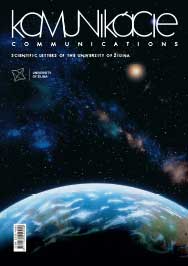Contributory Assessment of Creation of PM10 AS Impacted by Vehicular Traffic Based on the Presence of Heavy Metals
Contributory Assessment of Creation of PM10 AS Impacted by Vehicular Traffic Based on the Presence of Heavy Metals
Author(s): Dusan JandackaSubject(s): Methodology and research technology, Transport / Logistics
Published by: Žilinská univerzita v Žilině
Keywords: particulate matter; road traffic; air pollution; PM10; heavy metals; statistical methods;
Summary/Abstract: Emissions from different sources create a very complex mixture in the air both in qualitative and quantitative terms. Their composition is the result of distribution of all the sources in space and time, their size and characteristics of the pollutants on one side, and meteorological and climatic conditions on the other. Department of Highway Engineering of the Faculty of Civil Engineering at the University of Zilina has taken part in the project that focuses on the monitoring of dust particles formation initiated by road transport depending on both the road surface and traffic intensity, load. During the project the monitoring was focused on the measurement of various fractions of particulate matter and 17 heavy metals in the PM 10 fraction. The aim was to identify sources of particulate matter by means of statistical methods. The problem solving assumes the knowledge of multivariate statistical data analysis methods as, for instance, principal components analysis (PCA), factor analysis (FA) and multivariate regression and vector algebra. For the application of methodology suitable software may prove appropriate. The STATISTICA software, a computer program and the method of PCA and FA were used to quantify the contributions of individual sources of air pollution to solid particles. Data matrix with rows corresponding to individual measurements (samples) and columns corresponding to variables (measured pollutants) served as an input for calculations. Pollutants characterizing and defining the sources of pollution were selected as variables.
Journal: Komunikácie - vedecké listy Žilinskej univerzity v Žiline
- Issue Year: 15/2013
- Issue No: 3
- Page Range: 96-101
- Page Count: 6
- Language: English

